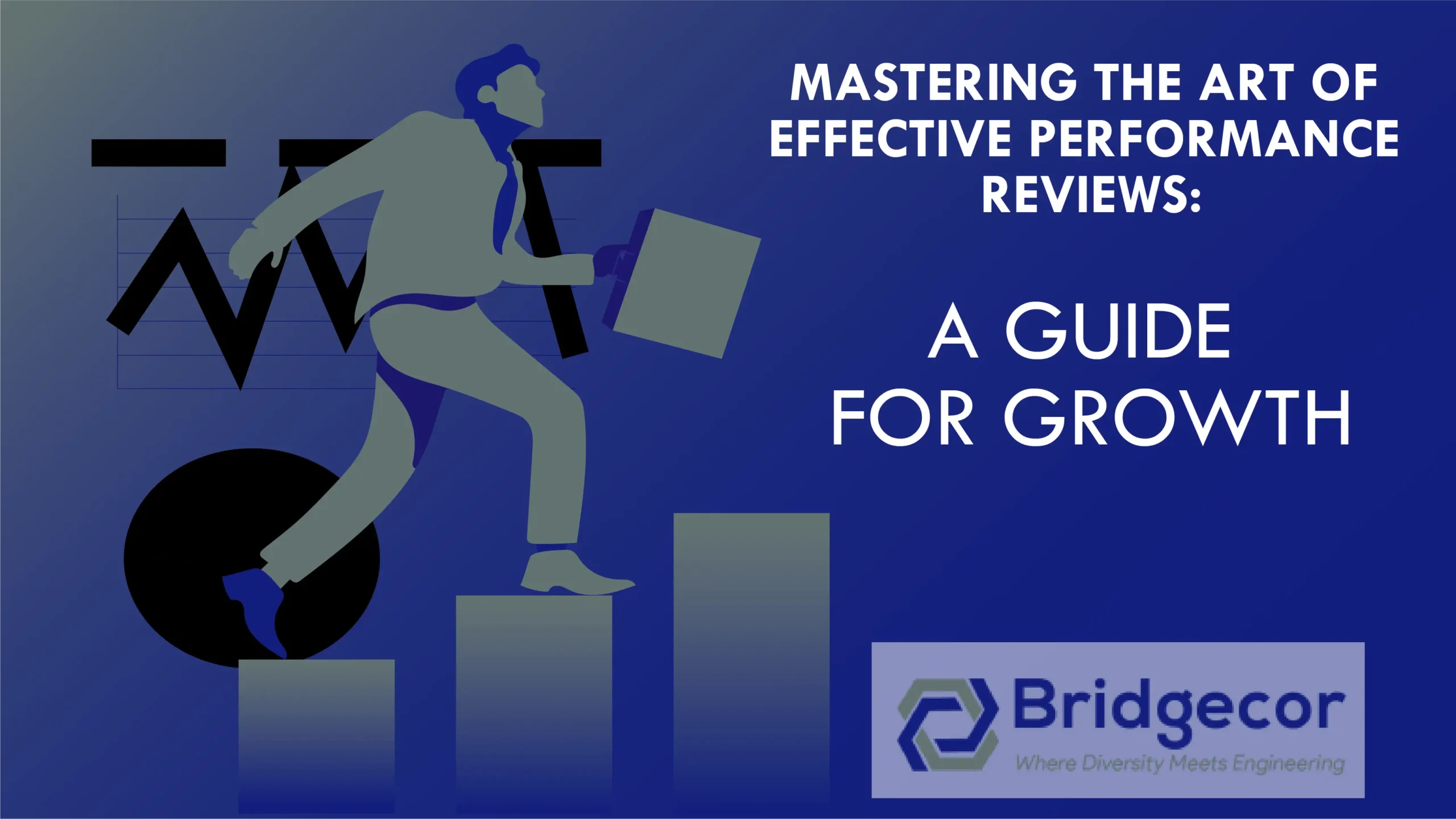
Mastering the Art of Effective Performance Reviews: A Guide for Growth
Performance reviews are a cornerstone of talent management, providing a crucial opportunity for both employers and employees to reflect on achievements, set goals, and align expectations. At Bridgecor LLC, we understand that mastering the art of performance reviews is essential for cultivating a motivated and high-performing workforce. In this comprehensive guide, we will explore the key components and strategies to conduct effective performance reviews that inspire growth and foster professional development.
Why Performance Reviews Matter:
Performance reviews serve as a structured platform for feedback, allowing organizations to recognize accomplishments, address challenges, and collaboratively plan for future success. When conducted effectively, performance reviews contribute to employee engagement, job satisfaction, and overall organizational productivity.
The Bridgecor Approach:
At Bridgecor LLC, we approach performance reviews as a valuable tool for both employees and employers. Our methodology is centered around open communication, constructive feedback, and a commitment to individual and organizational growth. Let’s delve into the key elements of mastering the art of effective performance reviews.
1. Preparation is Key:
Before initiating a performance review, adequate preparation is crucial. For employers, this involves gathering relevant data on the employee’s achievements, milestones, and areas for improvement. For employees, it means reflecting on their performance, identifying strengths, and pinpointing areas where they seek development.
2. Establish Clear Objectives:
Clearly defined objectives set the tone for a constructive performance review. Outline specific goals and expectations for the discussion, ensuring that both parties are aligned on what will be addressed during the review session. This clarity provides a roadmap for the conversation and fosters a focused and meaningful dialogue.
3. Foster Two-Way Communication:
Effective performance reviews are not one-sided monologues; they are collaborative conversations. Encourage open dialogue, allowing employees to share their perspectives, challenges, and aspirations. Actively listen to their insights and concerns, creating an environment where feedback flows freely in both directions.
4. Highlight Achievements and Successes:
Acknowledge and celebrate achievements. Positive reinforcement is a powerful motivator, and recognizing accomplishments during a performance review boosts morale and reinforces desired behaviors. Take the time to highlight specific contributions that have positively impacted the team or organization.
5. Address Areas for Improvement:
Constructive criticism is a vital component of performance reviews. Address areas for improvement with tact and empathy, providing actionable feedback that facilitates growth. Clearly articulate expectations and offer support in the form of resources, training, or mentorship to help employees overcome challenges.
6. Collaborative Goal Setting:
Set realistic and achievable goals collaboratively. Involve employees in the goal-setting process to ensure alignment with their career aspirations and the organization’s objectives. Establishing a roadmap for growth fosters a sense of ownership and commitment to professional development.
7. Continuous Feedback Culture:
Performance reviews should not be a once-a-year event. Encourage a culture of continuous feedback where employees receive timely input on their performance. Regular check-ins, informal discussions, and ongoing communication create a supportive environment for growth and improvement.
Conclusion:
Mastering the art of effective performance reviews is an ongoing journey that requires commitment, communication, and a genuine desire for professional development. At Bridgecor LLC, we view performance reviews as transformative opportunities to inspire growth, enhance employee satisfaction, and contribute to the overall success of both individuals and organizations. By implementing these strategies, you can turn performance reviews into a catalyst for positive change and continuous improvement within your team.
